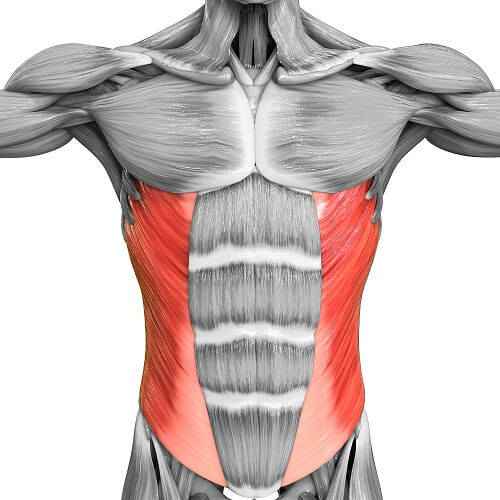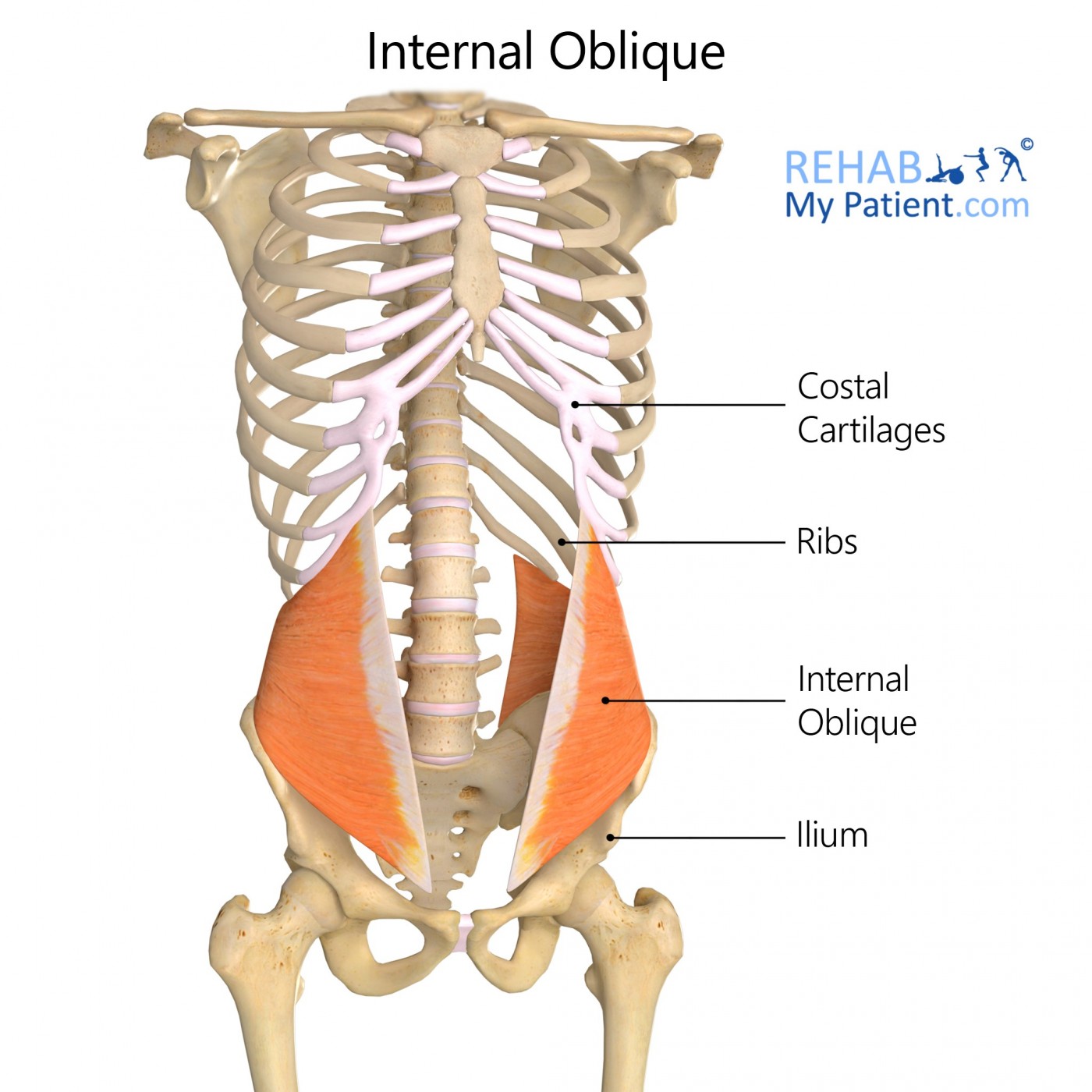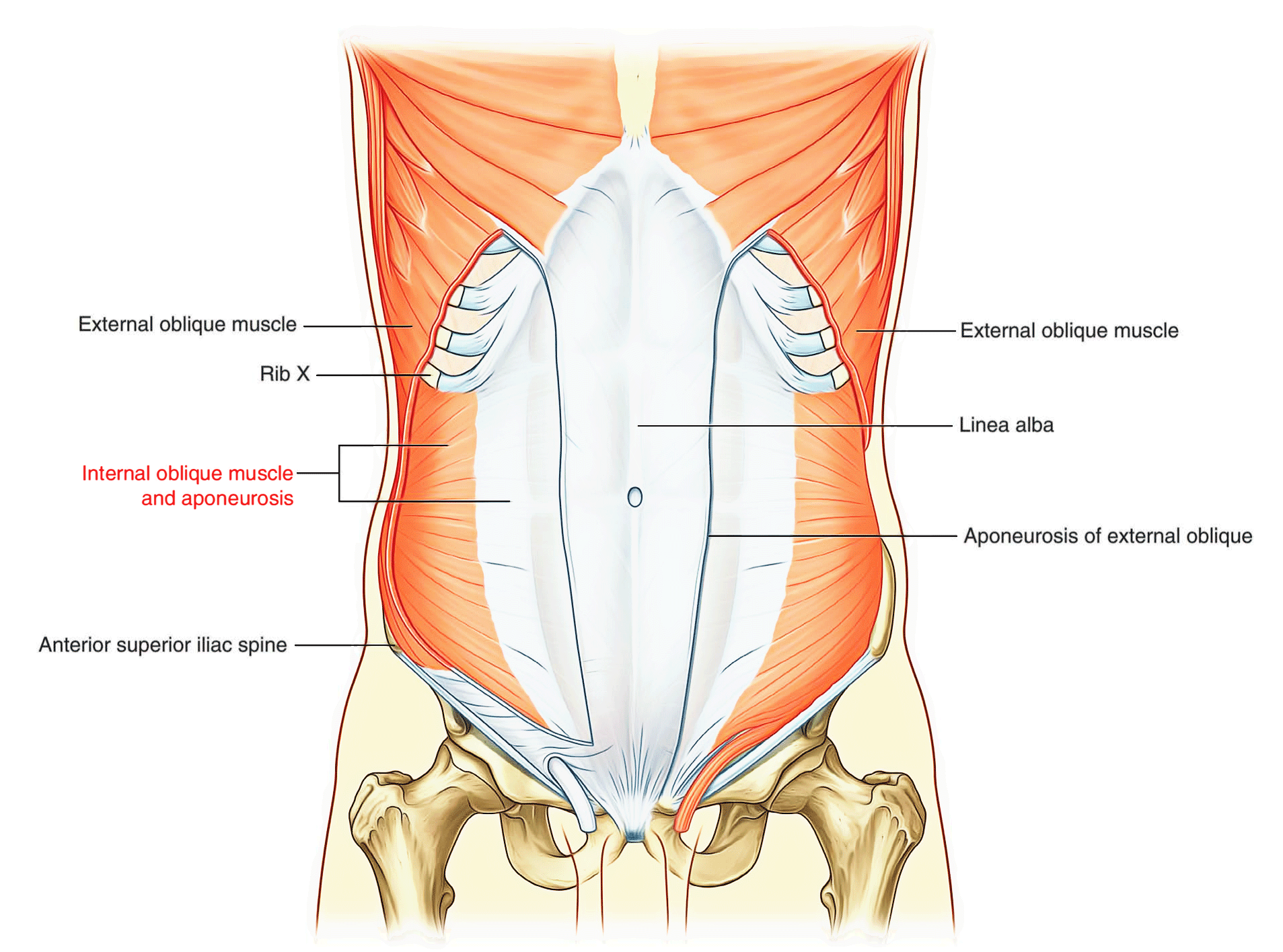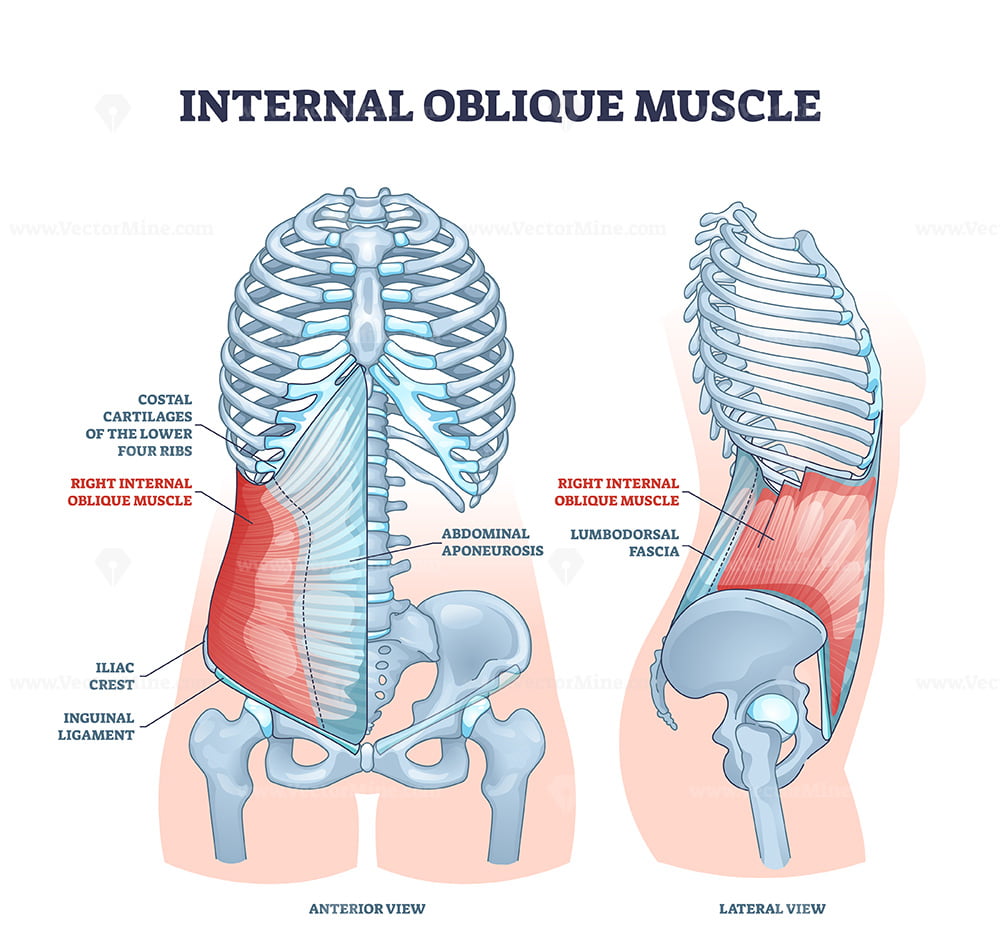
Oblique Muscle The Definitive Guide Biology Dictionary
The oblique muscles are located on the sides of your abdomen, between your hip and your rib cage. There are two sets of oblique muscles - external and internal obliques - and together they are responsible for helping your body twist and bend while also supporting your spine.

The Internal and External Oblique Muscles Its Attachments and Actions
abdominal internal oblique muscleinternal oblique muscle, is an that lies below the external oblique muscle and just above the transverse abdominal muscle. Its fibers run perpendicular to the , beginning in the thoracolumbar fascia of the lower back, the anterior 2/3 of the (upper part of hip bone) and the lateral half of the inguinal ligament.
:background_color(FFFFFF):format(jpeg)/images/library/7149/Abdominal_internal_oblique_muscle.png)
Internal oblique, external oblique, transversus muscle Kenhub
⭐ Internal Oblique Muscle Anatomy ⭐💪Origin: Thoracolumbar fascia, iliac crest and the inguinal ligament💪Insertion: Inferior margins of tenth to twelfth rib.

Spine Biomechanics Part 4 The Muscles of the Spine Biomechanics Education
The internal obliques can function bilaterally, which means both sides work together. Bilaterally they flex the trunk and compress its contents. They can also function unilaterally, which means one-sided. Unilaterally, they laterally flex the trunk and rotate it to the same side. Like the internal obliques, the external obliques function.

External and Internal Oblique Muscles
The internal abdominal oblique muscle is one of the muscles of the abdomen. It is a broad, flat skeletal muscle. Adjacent to the midclavicular line, the muscle belly gives rise to a broad aponeurosis of internal abdominal oblique, which contributes to the formation of the anterior and posterior layers of the rectus sheath. The internal.
:max_bytes(150000):strip_icc()/external-oblique-muscle-107702857-5bfd92bec9e77c002671fae7.jpg)
Abdominal Muscles Location and Function
The internal oblique muscles are also innervated by the ilioinguinal nerve (L1). Transversus abdominis The final muscle in the abdominal area of the anterior trunk is the transversus abdominis muscle. It lies underneath the internal oblique muscle, hence it is the deepest flat muscle.

Anterolateral Abdominal Wall Muscles
Transversus abdominis muscle: runs from the inner surface of the lower costal cartilages, the thoracolumbar fascia and iliac crest horizontally to the linea alba. Caudal fibers are involved in the formation of the cremaster muscle. The innervation is analogous to that of the internal oblique. The aponeuroses of the lateral abdominal muscles.

Obliques Exercises Obliques Workout ATHLEANX
Description. Internal oblique. Internal abdominal oblique is a muscle found on the lateral side of the abdomen. It is broad and thin. it forms one of the layers of the lateral abdominal wall along with external oblique on the outer side and transverse abdominis on the inner side. Its fibers are obliquely oriented hence the name.

Easy Notes On 【Abdominal Wall】Learn in Just 3 Minutes! Earth's Lab
The internal oblique muscle originates from the anterior two-thirds of the iliac crest and the thoracolumbar fascia. Its fibers diverge over the side of the trunk and insert along the structures of the midline, including the inferior margins of ribs 10-12, the linea alba, and the pubic crest. Origin and insertion of the internal abdominal oblique.

Internal oblique muscle with ribcage muscular system anatomy outline diagram VectorMine
The internal oblique muscle is a muscle that is found at each side of the body, just lateral to the abdomen. The word 'oblique' means 'diagonal' or 'slanted', which is a reference to the slanted.

Oblique Muscle The Definitive Guide Biology Dictionary
Definition. Oblique muscle refers to two abdominal muscles - the external and internal obliques. These provide trunk flexion and rotation. The external oblique is the thickest and runs from the lower ribs to the iliac crest. The internal oblique lies under the external muscle and also originates at the iliac crest before reaching the pubic bone.
:background_color(FFFFFF):format(jpeg)/images/article/en/the-lateral-abdominal-muscles/0rYd1fO40tMQrdUB4j6lrw_Musculus_obliquus_internus_abdominis_02.png)
Internal oblique, external oblique, transversus muscle Kenhub
The internal oblique (L. internus, internal ; obliquus, oblique.) is a flat sheet of muscle on either the side of the lower torso. It gets its name from being beneath the external oblique and having an oblique fiber direction relative to the midline. The most prominent actions of the internal oblique are spinal lateral flexion and spinal rotation.

External and Internal Oblique Muscles
Internal oblique, external oblique, and transversus abdominis muscles (from left to right) The external oblique muscle is a lateral flat muscle that courses from the 5th to the 12th rib ventromedially until the anterior layer of the rectus sheath. At its origin, it is tightly connected with the serratus anterior and latissimus dorsi muscles.
:background_color(FFFFFF):format(jpeg)/images/library/13061/Internal_abdominal_oblique_muscle_copy.png)
Internal abdominal oblique Origin, insertion and action Kenhub
The Obliquus internus abdominis ( Internal or ascending oblique muscle ), thinner and smaller than the Obliquus externus, beneath which it lies, is of an irregularly quadrilateral form, and situated at the lateral and anterior parts of the abdomen. It arises, by fleshy fibers, from the lateral half of the grooved upper surface of the inguinal.

obliques Fit Forever
Internal obliques: The internal obliques are a pair of muscles on top of the external obliques, just inside your hip bones. Like the external obliques, they are on the sides of the rectus abdominis, running from the sides of your trunk toward the middle. They work with the external oblique muscles to allow the trunk to twist and turn.

The Internal and External Oblique Muscles Its Attachments and Actions
The internal oblique muscle lies deep to the external oblique muscle and superficial to the transversus abdominis muscle. It represents a continuation of the layer of the internal intercostal muscles of the thorax 1. The muscle fibers pass in a superomedial direction. Laterally, it is muscular and medially it forms an aponeurosis that merges.